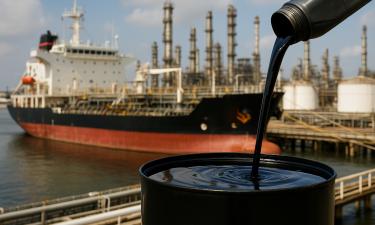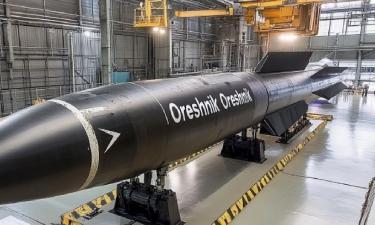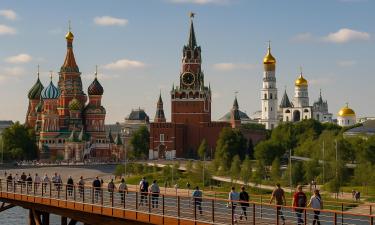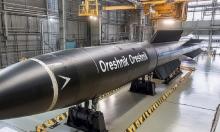How Andromeda Scared Greenpeace
Soviet submarine used "mysterious weapons" and terribly scared Greenpeace
Built in the early 1970s, the Andromeda submarine experienced its second birth after a re-fitting. The Andromeda submarine (project 667M) was launched in October 1982; it became part of the Navy for another eight years. Certainly, there were no ceremonies dedicated to the 20th anniversary of the submarine launching. Several officers of the Andromeda crew got together to share memories of the past. Quite unexpectedly the meeting unveiled a mystery over which Greenpeace ecologists and the US Navy Intelligence are still racking their brains.
The solution of the naval scandal that nearly spread all over the world is rather funny; PRAVDA.Ru is the first among Russian mass media to report about it. The story was told by captain of the second rank of the Andromeda submarine, Vladimir Chernolikhov.
This happened over ten years ago, it's high time now to unveil all naval secrets of Yeltsin's epoch. It was in summer of 1990 when glasnost and perestroika were very popular words in this country; the USSR made its desperate attempts to remain united. At that very period we heard about guys from the Greenpeace ecological movement. A Greenpeace ship was heading to Novaya Zemlya to the Soviet nuclear test ground. Soviet television reported it was a provocation of the CIA.
Half a year before, Andromeda underwent a re-fitting at the northern shipyard in the city of Severodvinsk; the submarine was at a depth of 150 meters in the Barents Sea immediately below the Greenpeace vessel. Submariners got tired of the Greenpeace ship moving to and fro above Andromeda. It seemed that the vessel of the ecological movement was mocking at the Soviet submarine that closely convoyed the foreign ship.
It is quite a problem for the nuclear submarine to keep pace with Greenpeace as the submarine's gyration radius is enormous. But the Soviet command ordered to keep an eye on Greenpeace and inform about any activity on board the ship. On one day chief officer Boris Durtsev went on watch, the man was awfully angry on that day.
Captain Nikolay Guzanov trusted the experienced chief officer and left the post for his cabin. Boris Durtsev remained alone to stand sentinel. He suddenly asked the crew if someone had an electric shaver. When the chief officer got the shaver he decided to imitate a torpedo attack with the sound of the electric shaver. As Greenpeace crew had all necessary devices to listen to what was going on on the submarine, they heard the familiar noise of a torpedo attack. The crew was rather experienced and recognized the scary maneuver by its sound. Greenpeace got alarmed when the Andromeda chief officer entered the submarine's hydroacoustics compartment. Greenpeace devices heard the sound of an approaching torpedo. The vessel got really very scared, as soon as Greenpeace changed its course and made full speed ahead. Probably the foreign ship decided that Russians were not to be trifled with.
Greenpeace escaped toward Norway and didn't entered the Soviet waters that year. That was a rather funny story indeed!
Seven years ago a delegation from Portsmouth, US, came to the Russian northern city of Severodvinsk. Joshua Handler, a well-known Greenpeace man was a member of the delegation. During the meeting it turned out that the man was on board of Greenpeace when the Soviet submarine imitated a torpedo attack. According to Joshua, the crew of Greenpeace got really scared with the sound imitating a torpedo attack. Records of the "torpedo" sounds were even given to the US Navy. The authority probably hasn't yet solved the riddle of the "mysterious Russian weapon".
To tell the truth, not only "weapons" used by the Soviet submarine, but also Andromeda itself was an absolute mystery for the USA. The matter of the fact is that the submarine was docked at the Severodvinsk shipyard for about ten years. Indeed, as compared with other Soviet submarines made in Severodvinsk, construction of Andromeda was the longest one.
In 1972, the USA started creation of Tomahawk cruise missiles meant for attacks from surface ships and submarines against targets on ground and at sea. Tomahawk tests finished in 1976. That was a new kind of weapons of strategic and tactical purpose that seriously unbalanced the arms systems of the USSR and the USA, the two confronting countries. At the end of 1976 the Soviet Ministry of Defense ordered to start development of analogous Soviet missile complexes. Meteorit-M complex with a cruise super sonic strategic purpose missile ZM-25 launched from a surfaced or submerged submarine was one of the complexes. Unfortunately, it took quite a long period to get the missile complex into the shape. The first official test of the Meteorit-M complex started only in 1988: it was launched from the surface (4 times) and from a submarine (3 times). At that, there were many bad launching as well. Andromeda was chosen a submarine base for launching of the complex.
Further works on the missile complex required construction of special carriers; the Navy and the shipbuilding industry faced several problems in that sector. That is why the works were stopped in 1989. Now Andromeda moored at a remote navy base in Murmansk-130, it is to be soon utilized.
Subscribe to Pravda.Ru Telegram channel, Facebook, RSS!





